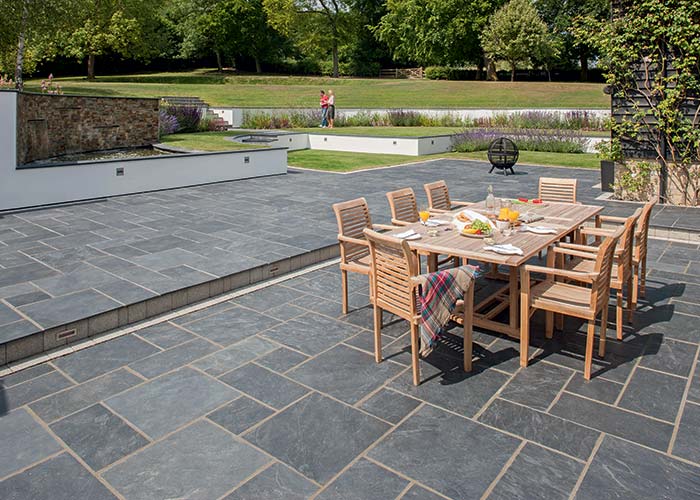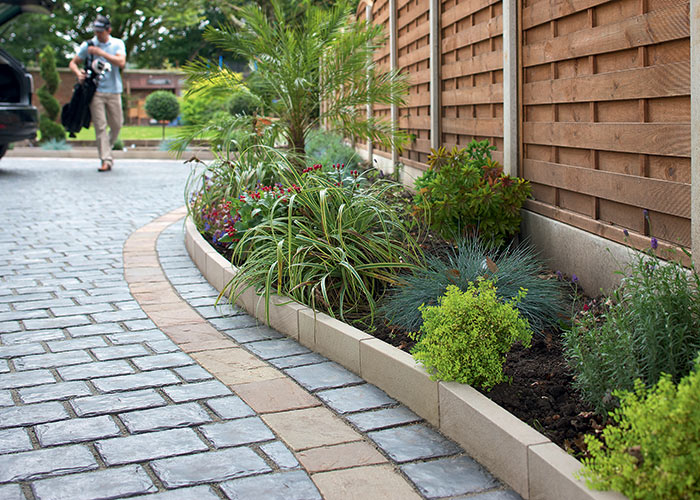Welcome to Langshott’s Customer Care section, here you will find helpful advice on looking after and maintaining your installation. Select the advice you require from one of the tabs below
We are so confident of the high standard of what we do that all workmanship carries a 20 year quality guarantee (excluding pointing).
Thank-you for choosing Langshott to carry out the construction of your block paved driveway. We suggest you read the following advice to enjoy many years of use from your new driveway. All of our paved driveways are installed with planning, precision and pride and they come with a 20 year guarantee. Please get in touch using our contact form is you are experiencing any issues with your new driveway that you feel we need to be aware of.
For the first few weeks after the drive has been laid, joints between blocks will be relatively porous. Water from rain or other sources may flush out sand, particularly on sloping sites. It is important that the joints are topped up with jointing sand to prevent damage to your driveway.
If stains persist after general cleaning more purposeful methods or chemical treatments may need to be employed. A local hardware store or DIY centre should be able to help. We suggest the application of any treatment should be carried out on a small section of the affected area first, carefully following the manufacturer’s instructions. Wear suitable protective clothing at all times. Ensure there is sufficient ventilation when using chemicals.
Whilst using chemicals, extra care has to be taken to avoid damaging or staining connecting material. When diluting acids, remember to always add acid to water and not water to acid. Alway read manufactures instructions.
Try to identify the source of the staining and repair it. This will prevent further staining to block paving. Eg., repaint rusty gates, downpipes etc.
Wash the effected area with a propriety biodegradable citric acid based cleaner. Chemical methods of removal should never be used on clay products. Wire brushes should not be used for cleaning the clay paving surface. Always test a small area first and if in any doubt about using Citric Acid block paving, contact us for advice.
If further information is required regarding the aftercare of your block-paved driveway, then call us on 01293 785413 or use our contact form to send us your message.
Thank-you for choosing Langshott to construct your tarmac driveway. Properly cared for your new tarmac driveway should give many years of service. Please read the following aftercare advice to get many years of use from your new driveway.
A new driveway will need a little time for it to harden before you can drive on it with a vehicle, therefore, on completion of the new driveway we recommend that it should not be used by vehicles for at least the first 48 hours. Pedestrians can walk on it straight away. Take extra care in Summer, tarmac will be softened as it heats up and becomes susceptible to damage. Modern cars employ powered steering that make it easy to turn the wheels of the vehicle on the spot or at low speed that can damage the surface of your new driveway.
Tarmac, unlike many other surfaces is adversely effected by temperature, even a normal British Summer’s day can be hot enough if combined with point loading (see section below for further details) to cause damage the surface that it will require repair.
It is sensible to take care not to over-stress the surface in hot weather, particularly by vehicles with power steering when front wheels are turned on the spot or at low speed. This can be detrimental to the surface. This is very important in the first summer as it's black and shiny and prone to soften as it easily absorbs heat. As the tarmac ages, the surface will turn grey and will harden, the risk of damage will be much less. However, it's wise to remember that there is always a risk of such damage in very hot weather. Scuffing damage generally disappears over time as the driveway ages and becomes grey.
In hot weather avoid using ladders or placing anything that transmits its weight over a small area (point loading), like scaffolding poles without using base plates to spread the load.
The above advice particularly applies to sheltered south facing drives where surfaces retain heat for longer periods and to heavy vehicles, such as bigger family cars and four-wheel drives.
Tarmac is resistant to occasional oil drippings but can be softened and damaged by significant oil spillages. If the oil or an oil based product is left in contact with the tarmac it will dissolve into the bitumen binder and soften it. We recommend that soaking up any spillage before it has time to damage the driveway. Use something to absorb the oil from the surface, dry cloths, cat litter or sawdust. If the oil has already penetrated the tarmac protect the surface from impact damage, if at all possible to give the contaminant time to evaporate away.
Fuel spills should be treated in a similar manner as oil but be aware of the flammable nature of petrol and diesel. Petrol will evaporate off very quickly, however diesel will take longer.
Point loading is where the weight pressing down on the surface of the tarmac is concentrated to a small area. Damage can occur in a short period of time if the tarmac is warm and the weight applied is concentrated to a narrow enough point of contact!
Please be aware that point loading can create indentations in your driveway particularly when the tarmac is new or the weather is hot, or your driveway is south facing. Point loading damage to your driveway can sometimes happen quite slowly but can be prevented by placing a sheet or plank of wood or a paving slab to spread the load. Look out for any object that transfers some or all of its weight through small contact points, the wheels of a big motorbike, jockey wheels of a caravan or trailer steps ladder feet or garden chairs a narrow legs and small feet. Heavy plant pots and planters may also cause damage if used with feet or supports that raise them to smaller point of contact.
Langshott makes every effort to remove and apply treatments to weeds and vegetation present in the ground as part of the preparation before laying tarmac. Although not very often, the occasional weed may pop up through the driveway surface, especially in the Spring. We can easily deal with this problem by applying more weed killer to the weed and reheating the tarmac with an infra-red heater and compacting the tarmac back into place. This operation will leave a black patch to the area as the heater regenerates the tarmac, but this will fade over time.
If soil, clay or compost are to be placed onto your driveway, a plastic sheet is recommended to prevent material getting stuck into the surface of the driveway presenting a cleaning problem. Soils and sand deposited directly on to an tarmac driveway should be carefully brushed from the surface whilst dry and the remainder removed with water and a stiff brush.
If you would like any further information regarding the aftercare of your tarmac driveway, then please call us on 01293 785413 or use our contact form to send us your message.
Fencing and decking fitted by Langshott comes with a 12 month parts and Labour warranty.
Langshott uses quality timber which has been pressure treated to enhance durability for all wooden installations. However, wet rot is the biggest problem for outdoor wooden products like fencing and decking. The following suggested tips and maintenance routine can help prolong the life of fencing or wooden decking for many years to come.
If you would like any further information regarding the aftercare of your fencing or decking , then please call us on 01293 785413 or use our contact form to send us your request.
Care and maintain a new lawn the same as any other living plant. Watering is very important for newly laid turf, using a sprinkler is an effective way to ensure new grass receives the moisture it needs.
Make sure all turf receives watering as moisture is unlikely to spread. Lift a corner on a slab of turf to check water has permeated all the way through and reached the soil beneath the turf. Quantities of water will vary with soil types and temperature.
It will be important to water the turf twice a day for the first two weeks, early in the morning and late afternoon. Avoid walking on the grass after it has been watered.
Please keep off new turf for the first six weeks or longer if its laid on a steep gradient, this will allow time for the grass to establish.
Start mowing after 6 weeks with the cutting blades set to a high setting to start and then mow again a few days later to reduce the height, if required. We recommend using a mower with a collector as raking can damage the grass in early days until it becomes fully established.
Try to avoid mowing any more than 1/3 of the sward length in one cut. Make sure mower blades are regularly sharpened. From experience we have found that petrol mowers tend to give the best results. We advise the grass should not be allowed to reach an unmanageable height.
Mowing may be repeated once a week from Spring to Autumn
Make sure turf is fertilised at least twice a year, we recommend in Spring and Autumn. An all-in-one weed and feed may be used but we would suggest using a dedicated lawn fertiliser instead, using a selective weed killer when required. Always use the fertiliser at least 2 weeks before the weed killer. Follow the manufacturers safety and handling instructions for garden chemicals and wear suitable protective clothing or apparatus. Use recommended quantities only. We suggest the use of a granular spreader as will achieve more even results.
Moss may be treated with lawn sand, carried out in Spring will give the best results. 3in1 weed, feed and moss killer will not be so effective.
If you would like any further after care advice for new turf, then please call us on 01293 785413 or use our contact form to send us your request





